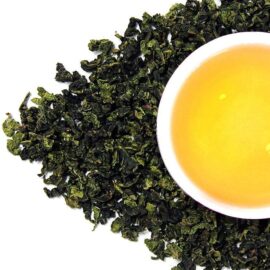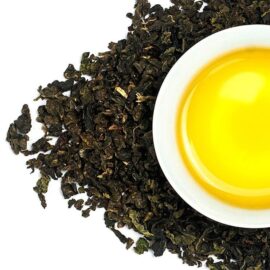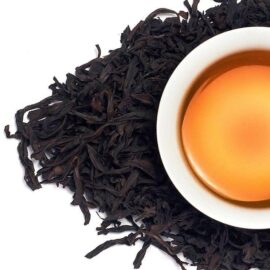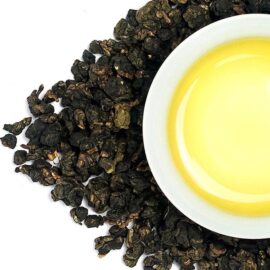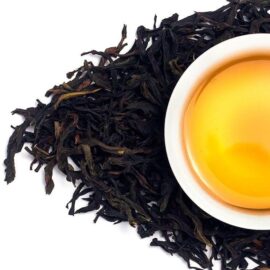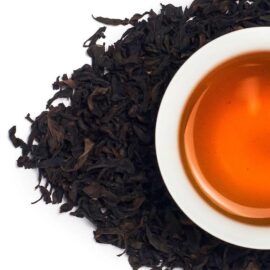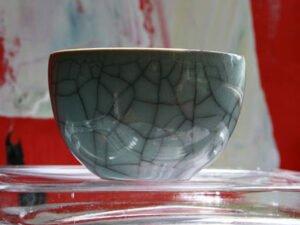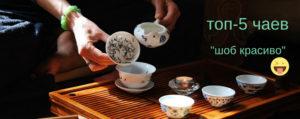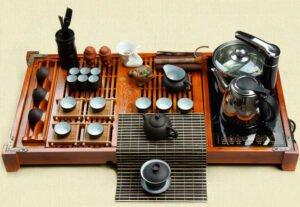Oolongs. There are many names for this famous type of Chinese tea. Among the popular pronunciations today, one can often find oolong (oolong). Nevertheless, Oolong teas can be divided into two broad categories – Dark Oolong and Light Oolong, as well as into three categories based on the place of production – Guangdong, Fujian и Taiwanese oolongs. How do you make sense of it all? We can help. Here’s everything you need to know about oolongs!
TOP 5 INTRODUCTORY FACTS ABOUT OOLONGS
FACT #1. The name oolong is a Russian-language transcription of the two Chinese characters “Wu” and “Lun”, which literally mean “black dragon”. This was due to the fact that in ancient times, most oolongs were heavily fermented, hence were dark and resembled red tea in shape. Thus, outwardly one “tea” was similar to the canonical Chinese dragon. See for yourself!

LOVE!!! In fact, the closest translation meaning of the character “Wu” 烏 is the color “raven”. The whole secret lies in the fact that the character for “bird”, is spelled almost the same as “Wu” (鳥 – “niao”), except for one feature, which is in the place of “bird’s eye”. Thus in the associations of the Chinese there was a bird whose eye merged with the plumage so that it could not be seen. The crow fits this description perfectly, which is why Wulong is a “dragon the color of a crow”.
FACT #2. Oolong teas are also called turquoise teas (青茶,qing cha). The whole point is that oolong (烏龍茶,wu long cha) is a semi-fermented tea, which according to Chinese classification occupies an intermediate position between green and red teas. This is why the term “Qing Cha” – turquoise tea – is often heard.

LOVE IT! Perhaps the most popular, but unfortunately distorted pronunciation of oolong tea is “oolong”. This transcription appeared due to incorrect transliteration from the Chinese pinyin system into English and then into Russian. Pinyin was developed by the Chinese in 1958 to write Chinese words in Latin while preserving their phonetics. According to this system, each Latin letter has its own pronunciation sound that corresponds to the Chinese language. However, many foreigners, seeing Latin, read it in the manner of English, which gave birth to many inaccuracies. And then these distortions went into the Russian language. This is how gong fu became “kung fu”, Guangdong province became “Canton”, and oolong became “oolong”.
FACT #3. The birthplace of oolong is considered to be the north of Fujian province. More precisely, the Wishan Mountains, where the “oolong” fermentation technology was developed around the XVII century. However, later oolongs began to be produced in the south of Fujian, in the neighboring province of Guangdong and only then on the island of Taiwan, which in the XVII century was part of China, not a separate state.

LOVE! In addition to the previously mentioned names of Oolong teas, the term “Yan Cha” is also quite common . Literally, these two words can be translated as “cliff tea”. In this case, the tea from the Wishan Mountains in northern Fujian is considered “cliff tea”. This name has taken root because tea in this mountainous area grows between cliffs. And curiously enough, it grows on the soil formed by the cliffs themselves.
FACT #4. Milk oolong is just a small subset of flavored teas. There are many legends about this category of oolongs, mostly marketing ones. Nevertheless, the most famous variety on the basis of which milk oolongs are made is Jin Xuan. This tea was sectioned in 1980, after which it immediately gained popularity and was famous for its “milky” notes. However, the artificially flavored tea became known as Nai Xian Jin Xuan. Given that aromatic additives significantly mask the natural tea flavor, unfortunately unscrupulous farmers and sellers can pass off even the lowest quality tea as good milk oolong.

LOVE IT! Formosa is the name given to the island of Taiwan in the past Taiwan is the birthplace of many oolongs, including “milk” oolongs. The name originated in 1590, because that’s when the Portuguese “discovered” Taiwan and gave it its name. And in 1860, British entrepreneur John Dodd began his work to export tea to the West. Thus any tea from Taiwan, at the end of the XXX century was called “formosa tea” – Formosa tea.
FACT #5. “Tea perfection” is how oolongs are labeled in China and Taiwan. It was with the development of Oolong tea growing that a special way of tea drinking emerged – the Gong Fu Cha tea ceremony. This special kind of tea drinking, which requires attention, time and subtle states of mind, perfectly epitomizes what the Chinese called “tea perfection”. After all, it is Gong Fu Cha that reveals the multifaceted aspects of oolongs.

PEOPLE! Oolongs are made Oolongs are usually made from mature leaves harvested from shrubs or trees more than 4 years old. And most oolong production techniques take more than one day to complete, especially the highly fermented oolongs. This is why the farmer’s craftsmanship of making such “perfect teas” is also called Gong Fu Cha, a tea of superior craftsmanship.
WHAT KINDS OF OOLONGS ARE THERE?
At us you can buy oolongs, different degrees of fermentation and locality. But as with any other tea, the key to its quality is the raw material. For the most part, it is the raw material that determines the quality of oolong teas. But of course we should not forget about the unique technologies of their processing. But first things first!
As we have already mentioned, oolongs are produced in 3 terroirs at once – Fujian and Guangdong provinces, as well as on the island of Taiwan. Taking into account that the mainland climate and soil are very different from the island climate and soil, the harvest time and the harvest itself are noticeably different from each other. In Fujian and Guangdong, for example, the leaves are harvested from April to November, while in Taiwan they can be harvested all year round. But to make it easier to distinguish between oolongs, the main thing is to classify turquoise tea not only by locality, but also by the degree of fermentation. In this regard, two main sub-types can be distinguished:
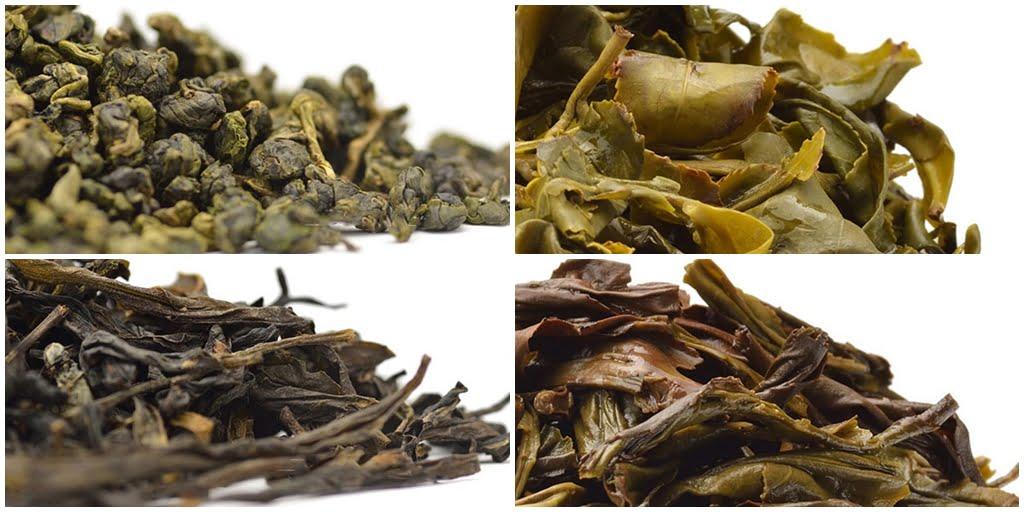
Light or lightly fermented oolong. This type of tea is by many associations closer to green teas, both in appearance and degree of fermentation. Externally, light oolongs are small, tightly twisted balls of yellow-green color. Their infusion is also light – golden-green. These teas are characterized by a very rich flavor and a long, sweet aftertaste. These teas are produced in southern Fujian and Taiwan. The degree of fermentation of light oolongs is of the order of 25-40%.
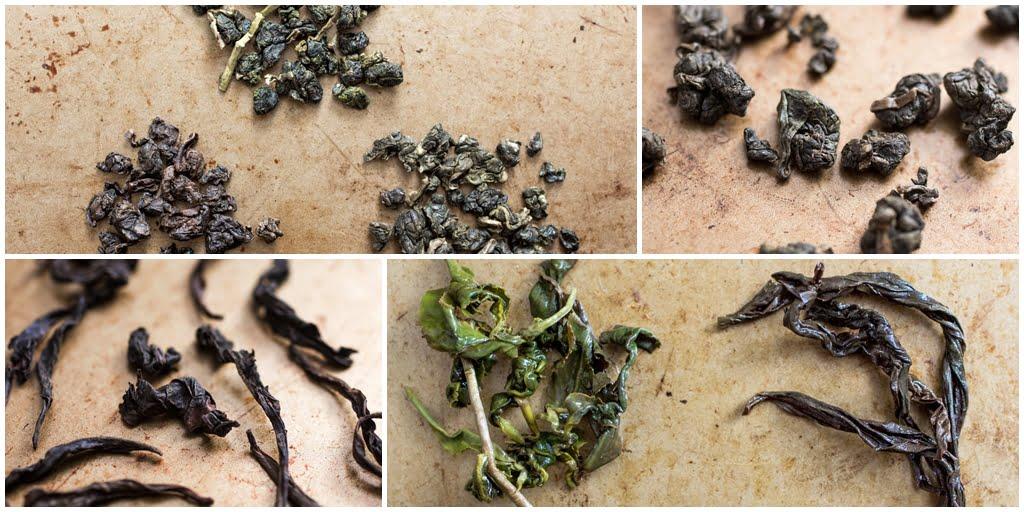
Dark or highly fermented oolong. This type of oolong is associatively close to red teas, because of its higher degree of fermentation and its appearance – long curved teas of dark brown color, sometimes even with greenish and violet tints. The infusion of such tea is dark amber, but transparent. It is also characterized by a strong and dense aroma and a very rich flavor. These teas are made preferably in northern Fujian and Guangdong province. North Fujian teas are also known as “Wuyi Yan Cha” (Wuishan Mountain Oolongs), while Guangdong teas are often called “Chaozhou Cha”, after the county of the same name in the province. The degree of fermentation of dark oolongs is in the order of 40-60%.
Considering all of the above, it is worth noting that in all of the above locations, the tea plant Camelia Sinensis is quite different from each other, with its own cultivars and tree species. As for the modern international botanical classification, Camelia Sinensis includes 3 varieties, 23 botanical species and 380 agrotypes. Of course, for oolongs, we will only consider the most famous cultivars, counties and tree subspecies.
OUISHAN. HOW ARE DARK “CLIFF” OOLONGS MADE?
The Wuyi Mountains are perhaps one of the most protected and scenic areas in China. However, the area is perhaps famous throughout the world for its “cliff”, dark, strongly-fermented oolongs. There are 99 different cliffs on the territory of Wishan, which in the gorges between them have a special mountain soil. Tea grown on the low strips of land between these cliffs is “yang cha” – cliff oolong. Wishan is also famous for its Confucian, Taoist and Buddhist shrines and monasteries. One Chan monastery that stands out in the context of tea culture is Tianxing Yunle. It was on its grounds that the famous oolong Da Hong Pao was born. The stories of the monks and tea in these mountains are closely intertwined. But how yan cha is made in this area, we will of course tell you.
- Raw material, harvest, collection. There are more than 80 varieties of Camelia Sinensis shrubs and trees in the WUI mountains. In many ways, the production technology of dark oolongs is almost the same, but the raw material and variety of tea tree is of great and decisive importance. Characteristically, these varieties have basically the same names as the tea variety itself: Da Hong Pao, Shui Jin Gui, Te Luo Han, Bai Ji Guan. These teas are harvested in May, favoring shoots of 3-4 mature leaves.
- Wilting. The harvested crops are carried to the factory in wicker baskets on troughs, as the way lies from the cliffs to the factory on mountain paths. The tea is dried in the open air on special bamboo trays, stirring from time to time. Then the raw material is taken to a cool room for contrasting temperatures, and then again in the sun. This procedure is repeated several times.
- Shaking and writhing. When the withered leaves have lost their basic moisture, they are spread out on a wicker sieve and shaken rhythmically with occasional crumpling. This procedure starts the basic fermentation. This process can also be mechanical, where the tea is shaken under air currents of different temperatures in special machines.
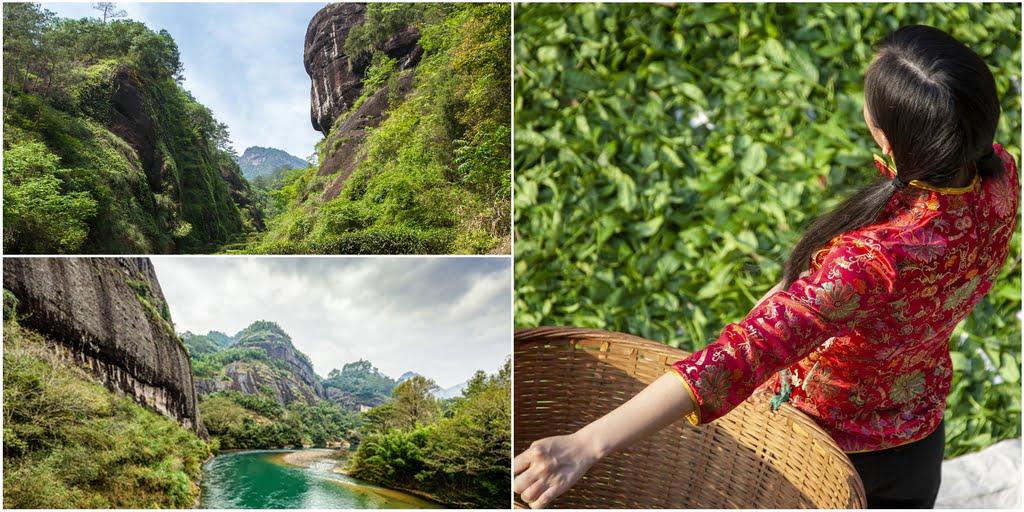
- Heat treatment. In Chinese, this stage is called “shaqing” or “killing the greens”. This stage takes place in special flat boilers where the raw material is roasted by hand, but there are also special mechanical roasting drums. In both cases, constant stirring and stirring is important for an even “shatsin”.
- Spinning. The tea is most often spun not by hand, but on special machines – rollers. This stage is started immediately after roasting. Such crumpling allows you to move to a new stage of fermentation.
- Tempering. Hot heating is a key step in the dark oolong production process. Depending on the type of tea plant and the type of tea to be produced, the heating can be on low, medium or high heat and lasts for different lengths of time. The heating in the classic variant takes place on coals, but there are also conveyor ovens, but they are found only in large manufactories. Characteristically, the steeping can last from one to several weeks, allowing the tea to rest and then slowly steeping again.
- Final drying and sorting. After steeping, the tea is actually “mao cha” (raw tea), which can be brewed and drunk, but after a short time the tea will begin to lose its flavor and other properties. Therefore, a final drying at low temperatures is necessary to stop the remaining fermentation processes. The resulting tea can only be sorted from the cuttings and the “cliff” oolong is ready!
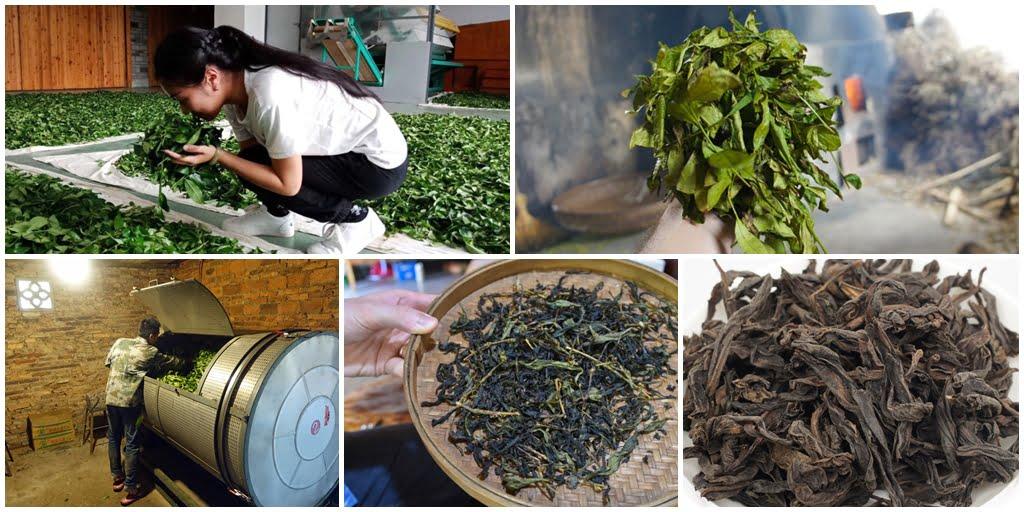
ANSI UYU. HOW ARE LIGHT OOLONGS MADE?
Anxi County, in the south of Fujian Province, is the birthplace of many light, low-fermented oolongs, the most famous of which is probably Te Guanin, named after the Bodhisattva Avaloketishvara. Tea was made in this area as early as the late Tang Dynasty, but it wasn’t until the early 18th century, when some oolongs from Anxi became “imperial”, that they gained universal appeal. The following “tea” districts are famous in this Fujian county: Xiping, Gande and Xianghua. These regions produce more than 40,000 tons of tea annually. The southern climate and yellow soils allow farmers to harvest not only in spring, but also twice in summer and even in fall. It is worth noting that spring and fall harvests are considered the best.
As for production techniques, many light oolongs are similar, but technological nuances such as the strength of the fire, the duration of a particular stage, skill, etc. are crucial. – are decisive in this case. This is evidenced by the dozens of subspecies of Te Guanin tea alone. But what do they have in common? Let’s get to the bottom of it.
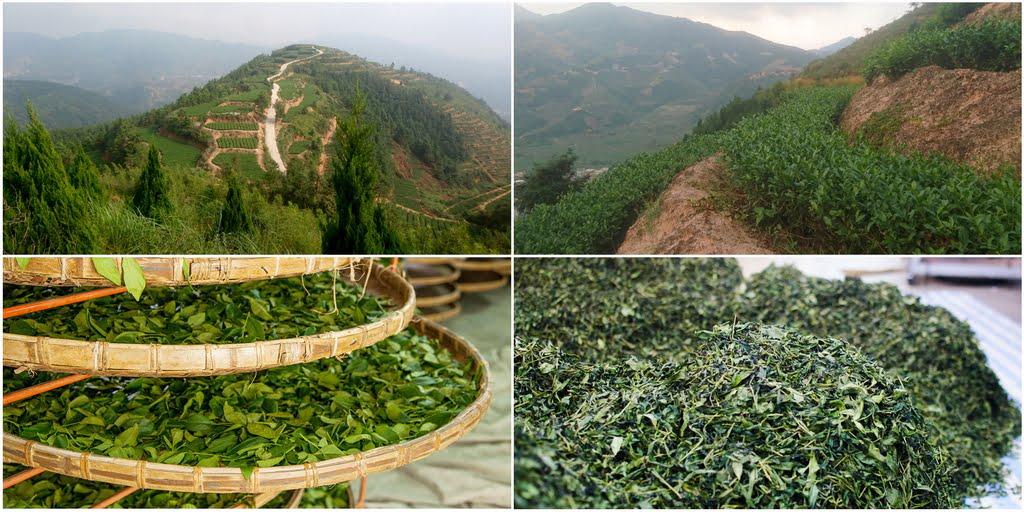
- Harvesting and wilting. Harvesting starts in the morning and picks 2-3 fairly large leaves with a bud that have already reached maturity. The harvested leaves are spread out on bamboo sieves or cloths in the open air. Depending on the weather conditions, the leaves are left to dry for about 2 hours.
- Shaking. Most often a special drum is used for this step, sometimes bamboo sieves. The wilted leaf should be shaken, then cooled and shaken again several times to start fermentation properly.
- Heat treatment. The “shatsin” or “killing of greens” stage is done by heat treatment. Today, it is rare for farmers to resort to manual frying in boilers in preference to a hot air drum.
- Twisting and “smashing”. Immediately after heat treatment, the hot leaves are wrapped in a cloth to form a large ball, which in special rollers will slowly rotate and compact between two disks. Then such twisted tea is placed in a centrifuge to “break” the seals. To give the ball shape to each leaf, twisting and “breaking” is repeated several times.
- Drying and sorting. The final drying takes 5-10 minutes and takes place over a low fire or in baskets over coals. The dried tea is sorted and the remaining small stems are separated from the leaves by hand.
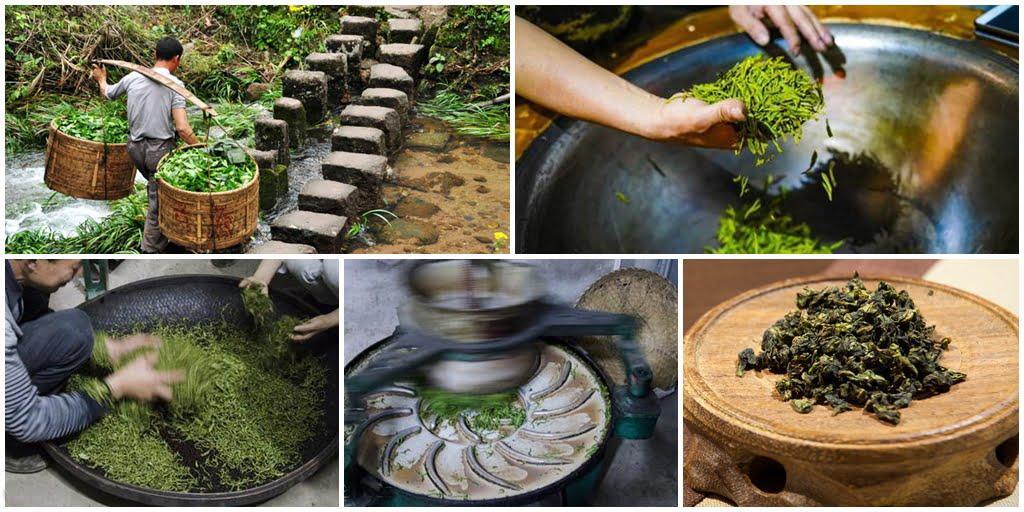
CHAOZHOU DISTRICT. HOW DO YOU MAKE DANZONGS?
Guangdong Province is a seaside province in southeastern China. Guangdong’s capital is Guangzhou , a strong economic center. But Guangdong is also world famous for its mountainous terrain and its dark, strongly-fermented oolongs from Chaozhou County, Feng Huang and Wu Dong Mountains. Not much information has survived about when tea was made in these mountains, but notes on Guangdong’s tea making date back to the Song Dynasty. Oolongs from this area are often called “dan tsun”, which means “lonely bushes”. There are many varieties of these bushes, or rather trees. Characteristically, some of the trees are up to 100 years old. Perhaps the most famous oolong of this area is Feng Huang Dan Tsung. However, Guangdong teas are often combined by the term “Fenghuang”, hence the large number of varieties of Feng Huang Dan Tsun, which differ markedly from each other, but bear the same name. As for the production technology, it is in many ways similar to the dark oolongs from Wishan.
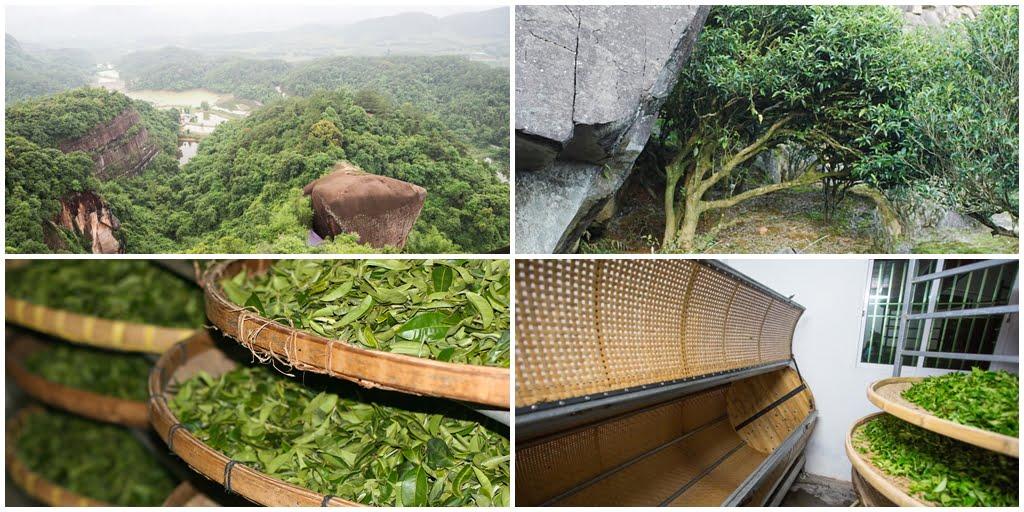
- Harvesting and wilting. In the case of Danzong, these two stages are similar to Wuishan, but there are some differences. A bud and 4-5 mature leaves are usually taken as raw material. But also, as in Fujian a big role is played by the master, his experience is how he “feels” the raw material and takes into account the moisture level. According to this principle, the strength, the number of approaches and the thickness of the raw material layer on the bamboo pallets can vary.
- Staking, shaking and curing. This stage is just before the main heat treatment and is crucial for the famous “Guangdong” aromatic and flavor properties of the tea. The essence of collision is to toss the leaves with two hands so that they collide in the air. In this way, with this slight damage to the tea leaf, the fermentation processes are triggered. Then it is important to shake and let the leaves rest. This procedure is repeated about five times and usually at night, when the humidity level favors fermentation.
- Heat treatment. “Killing greens.” As in the case of other dark oolongs, it is roasted mechanically or by hand and does not differ much from the Wuishan technology”.
- Crumpling. It takes place in the same way as in most cases, with the help of a special machine – a roller. At first, the pressure from the top of the roller cylinder is low, as is the speed of rotation, which is gradually increased. The juice from the tea leaves continues to support fermentation and the leaves take the desired shape.
- Drying and sorting. Drying takes place by heating over charcoal with alternating cooling. The temperature is gradually reduced and the heating time is increased. Only after drying is the sorting and separation of unwanted cuttings and fines done.
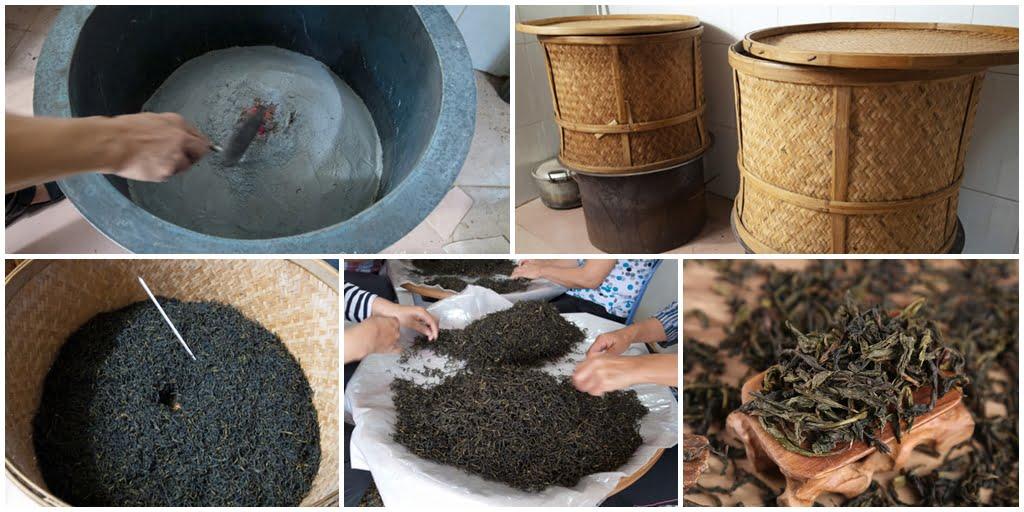
FORMOSA TEA. HOW ARE TAIWANESE OOLONGS MADE?
There is a version that the first tea plants appeared in Taiwan together with waves of emigrants back in the VIII century. But the real “farming boom” began only in the 19th century. For the most part, the island is dominated by a subtropical climate, which, combined with the high mountains, makes for a stunning tea terroir. Taiwanese oolongs are classified not only by the degree of fermentation, but also by the altitude and shape of the finished tea. High-altitude tea is considered to be tea that grows at an altitude above 1000 meters ( Alishan, Dong Ding, etc.), and lowland tea if the altitude is up to 400 meters above sea level. However, most of the farms and production facilities are located in the middle altitude. As for the shape of the finished tea, spherical light teas in Taiwan are simply called oolongs, while longitudinally twisted oolongs are called “Baojuns”, the most famous representative of which is Wen Shan Bao Zhong. However, outside of this classification is Dong Fang Mei Zhen, which is classified as a longitudinal oolong, which has many red tea notes in it. Nevertheless, it was this tea that gave Taiwan world fame back in the 19th century.
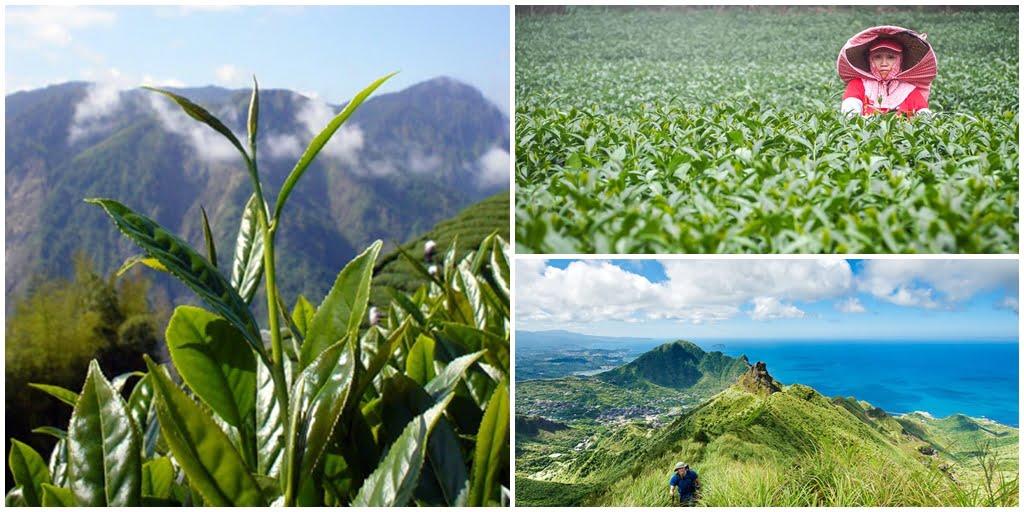
- Gathering and wilting. The island is very humid and has frequent rainstorms, so after picking the tea is dried in special areas under closed canopies in the open air. The tea is laid in a thin layer and turned over periodically.
- Crumpling and shrinking. Fermentation processes by kneading are started immediately after wilting, which is accompanied by periodic shaking. After this stage, the raw material is cooled and allowed to rest. Such cycles require 5, sometimes even 7.
- Heat Treatment. As for roasting, “killing greens” for Baojuns is characterized by about 10% of fermentation, for light highland oolongs 15-25%, and for Dong Fang Mei Zhen 50-60%. Fermentation is stopped by drying in a special drum with hot air supply.
- Twisting and kneading. The heated raw material is wrapped in portions in cloths to form a ball shape, and then placed in the roller device for twisting. However, it is important to periodically take the leaves out of the roller and knead them, dry them a little and send them back to the roller for twisting. However, in the case of oolongs such as Dong Fang Mei Ren, it is necessary to add a “wet fermentation” stage, where after twisting, the raw material is covered with a wet cloth and left for a few hours.
- Final drying and sorting. Drying takes place in a conveyor kiln so that the tea is finally dried until the moisture is completely evaporated. Some farms use classic charcoal heating. The finished tea is only left to be sorted.
WHAT IS OOLONG LAO CHA AND GABA TEA?
Our story about the classification of oolongs and their production techniques would be incomplete without mentioning GABA tea and aged oolongs. Lao Cha, or literally “aged tea” is a category of oolongs, which are somewhat similar to pu’erh, only in the world of turquoise tea. The technology of its production is extremely simple. Some of the good raw material from the harvest is brought to the state of “mao cha” (literally: “raw tea”), and then not roasted, but laid for many years of aging in hermetically sealed clay vessels. Every few years, the master unseals the tea and warms the tea over low heat and seals it again. And so it goes on until the master decides that the tea has “aged” enough. This kind of Lao Cha has become popular in Taiwan since the twentieth century. As for GABA, everything is more technological, but first we need to define a few chemical and biological concepts.
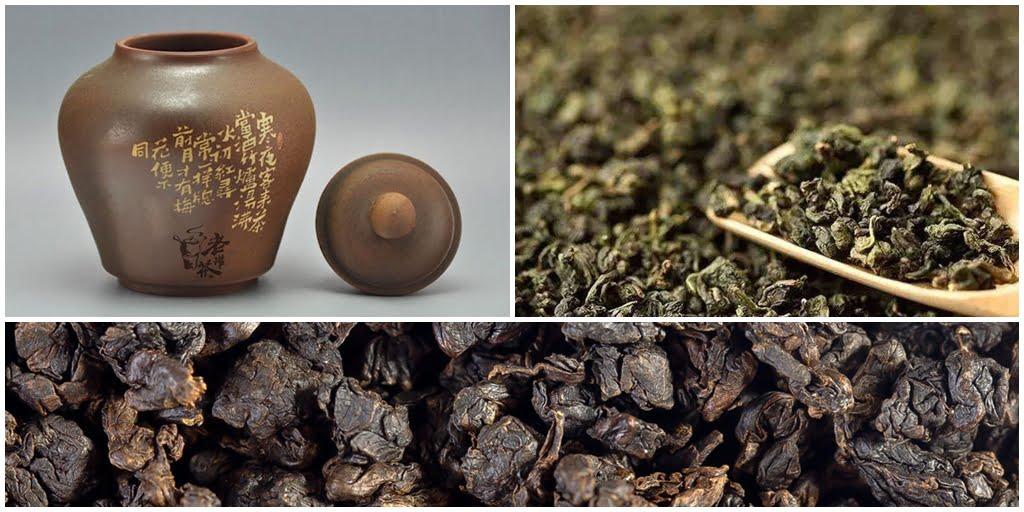
Literally, GABA is a transliterated abbreviation of the English term GABA – gamma-Aminobutyric acid. Translating it into Russian, we get another abbreviation, GABA, which means gamma-aminobutyric acid. GABA is a neurotransmitter of the central nervous system, which in fact can be called a pure “anti-stress”, because, formed by this acid calms the human nervous system. And if we talk about the deficiency of GABA in the body, then as a consequence there is excessive irritability, insomnia and depression.
Gaba oolong is a tea that contains an impressive proportion of GABA. The technology of production of such oolongs was born in Japan in the 80s and ten years later moved to Taiwan, where it was brought to perfection. Today GABA tea is not only oolong, but also red, and it is made even in mainland China. So how do you achieve such an unusual effect with raw materials? We’ll tell you!
The secret lies in fermentation under anaerobic conditions, which means without access to oxygen. Japanese scientists found GABA in tea that had undergone normal fermentation, but its content there was determined to be absolutely insignificant. But when at a certain stage of fermentation raw materials are placed in a large metal container, from which pumped out the air, the content of GABA increases significantly – from 0.15 to 0.3 percent. Thereby the vacuum plays a decisive role in the synthesis of glutamic acid into gamma-aminobutyric acid forming an “anti-stress”, concentration-boosting oolong tea.
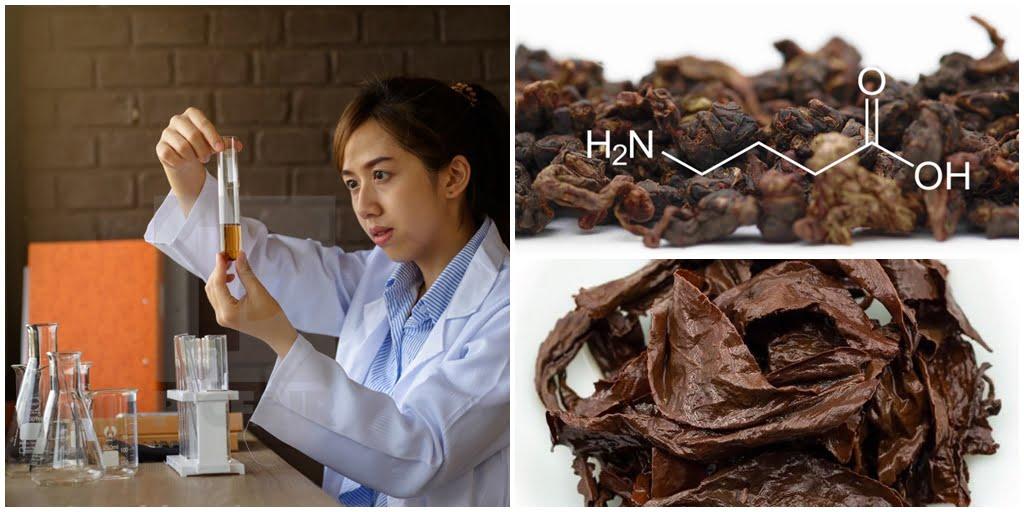
HEALTH BENEFITS OF OOLONG
If legends are to be believed, the great Shen Nung, who lived in the 27th century BC, discovered both the tea itself and its medicinal properties. It is believed that it was Shen Nong who wrote the Ben Zao Jing (“Canon of Roots and Herbs”), in which tea is first mentioned.
LOVE IT! During the Shen Nung period, “tea” was pronounced Tu, meaning “bitter plant”. It was not until the Tang Dynasty that the familiar pronunciation and spelling of the character Cha (茶) took hold. And closer to the beginning of our era (in the Eastern Han era), the famous healer Hua To wrote Shi Jing (“Canon of Food”) in which he described in detail the medicinal properties of tea. But what is applicable to oolongs these days? Let’s find out!
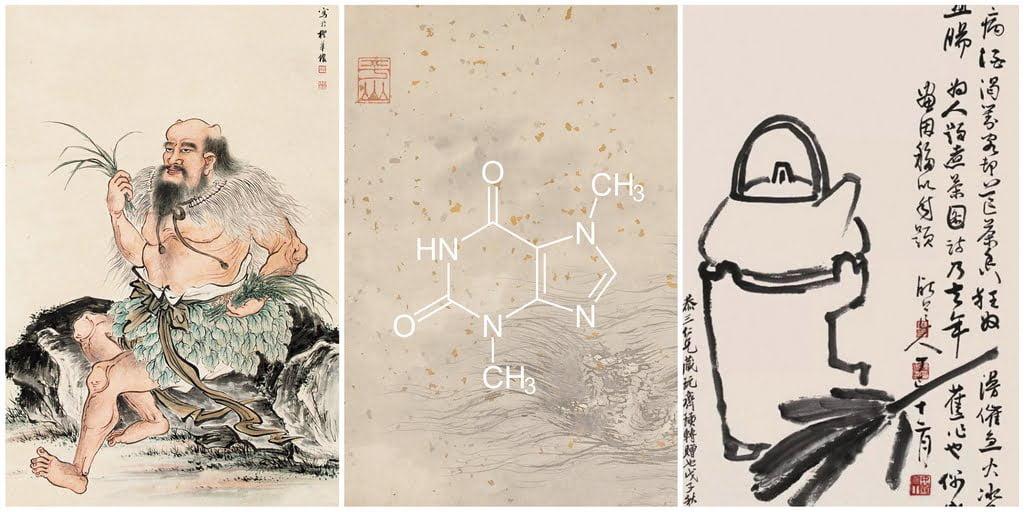
Oolong contains more than a hundred different compounds and substances that determine its beneficial qualities. The main groups include phenolic compounds, alkaloids, essential oils, proteins, carbohydrates, pectin, pigments, saccharides, vitamins, enzymes and minerals.
Within these chemical categories are the notorious “t annins “ (tannin), catechin groups, caffeine (very little), theophylline, glucose, sucrose, α-carotene β-carotene, vitamins A (retinol), C (ascorbic acid), E (tocopherol), P (bioflavonoids), PP (nicotinic acid – vitamin B3).
And now the top 5 useful qualities of oolongs, which is not a complete list:
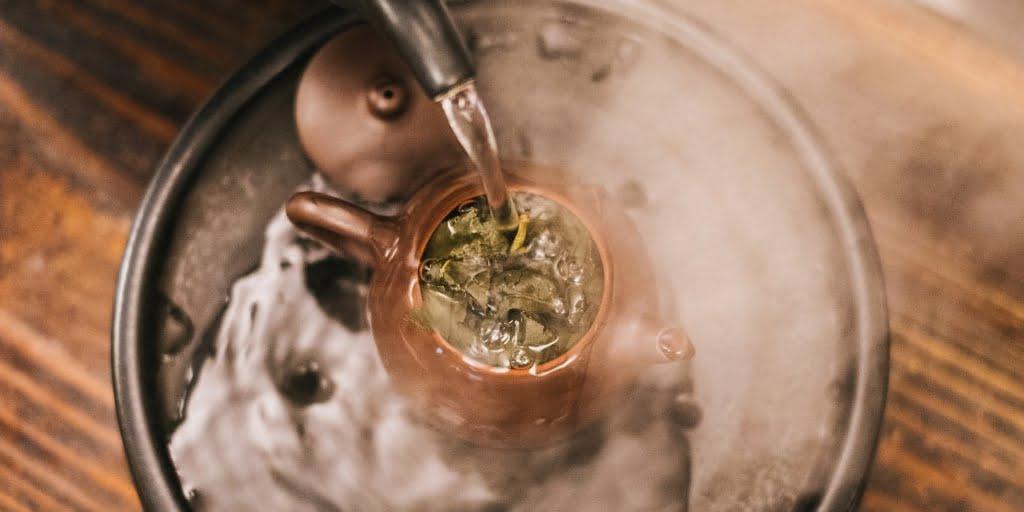
FACT #1. Lowers blood cholesterol and sugar levels by affecting the circulatory system.
As a consequence, it prevents the development of cardiovascular disease, which reduces the risk of heart attack and stroke;
FACT #2. Improves the work of the gastrointestinal tract.
As a consequence, it promotes the process of digestion and metabolism and as a consequence, it contributes to the reduction of excess body weight by normalizing metabolism and breaks down fat;
FACT #3. Fights hypertension.
As a consequence, it normalizes blood pressure;
FACT #4. Has a relaxing effect.
As a consequence is able to reduce stress, due to the high concentration of essential oils.
FACT #5. Helps to preserve youthfulness.
As a consequence, it rejuvenates the body at the cellular level, slowing down the aging process.
HOW TO STORE OOLONGS?
The rules for storing oolongs are not very different from those for other types of tea, except for puerh. You can read about how to store tea at home in detail here. As for oolongs, the general rules apply to all its types, namely:
Can:
For light oolongs, a special kind of foil packaging, from which the air has been completely evacuated, is perfect. It is in such packages that you can most often find oolongs. Such packages do not allow to produce condensation on the inner walls of the package at a sharp change of temperature. And of course, tea pots (cha guan), as well as tin, wooden or cardboard jars with tightly closed lids are suitable.
Do not:
It is not at all desirable to allow direct sunlight, because otherwise, the tea may “burn out”. The next enemy of oolongs is extraneous odors. Sharp, for example, “kitchen” odors or incense in this case can “spoil” the most valuable and expensive for you tea.
Recommended:
The place of tea storage should be dry, so as not to give the tea an unnecessary reason to oxidize. As for temperature, room temperature is good for dark oolongs, for light oolongs it is cooler up to +3 degrees Celsius (storage in the refrigerator), provided that the tea is in vacuum packaging.
